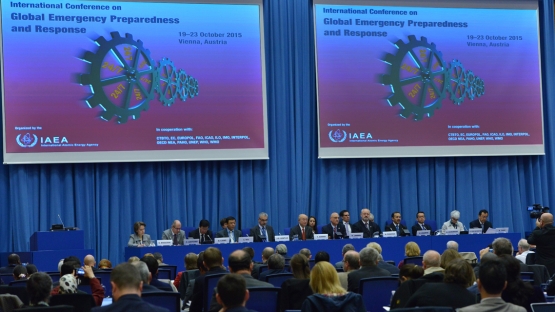National response plans in emergency preparedness need to be in line with international safety standards and best practices, delegates heard at the opening of the International Conference on Global Emergency Preparedness and Response that began at IAEA headquarters in Vienna today. The week-long conference offers experts in emergency preparedness and response a platform to discuss best practices and focus on strengthening national systems in dealing with nuclear and radiological emergencies.
Having robust emergency response systems in place enhances public trust in the peaceful use of nuclear and radiation technologies.
“Despite the best safety efforts, the possibility of radiation-related emergencies cannot be totally excluded. This makes an efficient emergency preparedness and response system essential,” said Yukiya Amano, IAEA Director General, in his opening address.
“The Fukushima Daiichi accident four years ago was a painful reminder that a serious accident can happen anywhere, even in a developed industrial country. My report on the accident, which was published last month, noted that weaknesses in emergency preparedness and response arrangements, and in planning for the management of a severe accident, were among the important factors in the complex chain of events that occurred.”
Acting quickly and responding properly requires extensive preparation, said Elena Buglova, Head of the IAEA Incident Emergency Centre (IEC). “Emergency response begins with preparedness,” she added. As the global focal point for coordinating international communication, assistance, and response to nuclear and radiological emergencies, the IEC helps Member States to improve their emergency preparedness and response capabilities. To learn more about this issue, listen to this short interview with Elena Buglova.
“Our job is to protect human life, health and the environment,” said Conference President Ramzi Jammal, Executive Vice-President and Chief Regulatory Operations Officer of the Canadian Nuclear Safety Commission. “There is a compelling need for clarity on the roles and responsibilities of regulators, stakeholders and all levels of government to ensure that a response to nuclear and radiological emergencies will be based on health affects so the public is adequately protected. This also involves building and maintaining trust and credibility before any emergency occurs, improving decision making, educating all stakeholders on nuclear and radiological emergencies, and being vigilant to respond effectively.”
Over 470 participants from 85 Member States and 19 international organizations are attending the event.
“Today, the IEC provides around-the-clock assistance to Member States in dealing with nuclear and radiological incidents and emergencies,” said Juan Carlos Lentijo, IAEA Deputy Director General and Head of the Department of Nuclear Safety and Security. This conference will also provide opportunities to refresh and update knowledge, challenges and priorities in specific areas of emergency preparedness and response, he further explained.
Conference sessions will cover subjects such as emergency management, protection strategies, public health and medical response, waste, international cooperation, communication, education and training, and lessons learnt from past experience. A new IAEA web-based tool, the Emergency Preparedness and Response Information Management System (EPRIMS), will be presented.
Although creating and maintaining emergency preparedness and response systems are a national responsibility, active cooperation and collaboration among countries is also required. “From experience, we all know that emergencies do not respect borders, hence international efforts in building efficient emergency preparedness and response are needed,” Mr Lentijo said.


